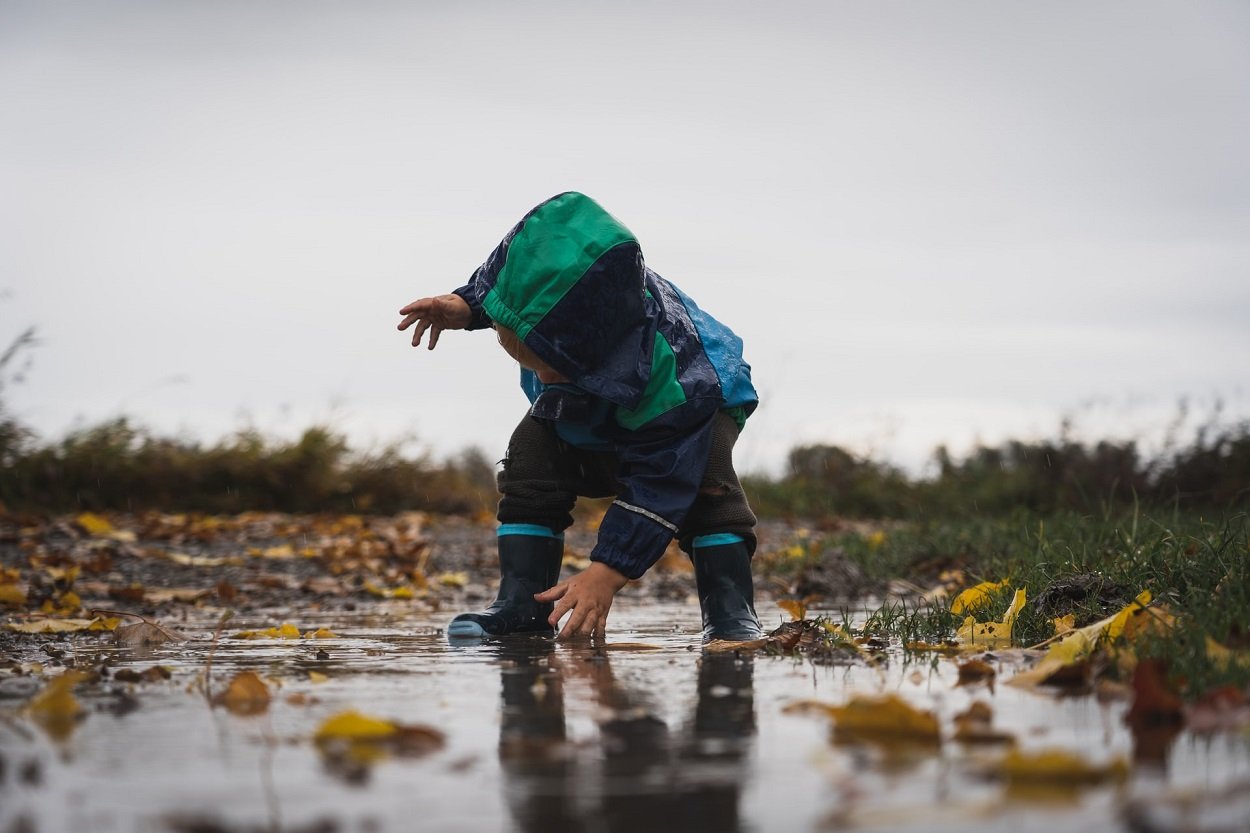11 Ways to Transform Your Backyard into a Learning Space for Kids
Providing our children with the opportunity to learn and explore within natural spaces at an early age can be one of the greatest gifts we can give in terms of child development. Sensory learning in the outdoors not only teaches kids to respect their environment but it also equips them with problem-solving techniques and motor skills that they otherwise might not have the chance to exercise in a traditional classroom. That’s why we reached out to the experts in youth outdoor education from Toronto to Sacramento to provide you with a few creative ideas for transforming your backyard into a learning space for your kids where your kids can continue to learn and grow with nature.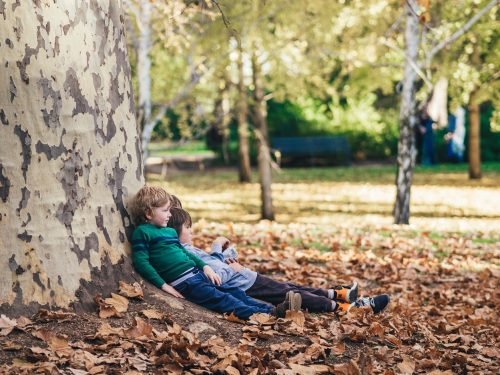
Work with your surroundings
Work with your surroundings! So often we can find materials to build obstacle courses, and other play spaces right in our own backyard. Dead trees and logs can be transformed into an epic balance beam obstacle course like the one pictured here! - Niños & NatureThe next time a neighbor cuts down a tree, ask for a round or two—they can become child-size furniture, or turn them on their side to serve as the fulcrum for a seesaw. - Chickadee Hollow PreschoolNatural features lend themselves to learning activities for children. Stumps and tree parts can be used for building. Balancing stones is a wonderful science and art activity. Uneven ground surfaces challenge children to use their core strength and coordination. Before you manicure your lawn, think about all of the natural learning opportunities your yard provides! - Mountain SproutsI’m very intentional about the materials that I include in my outdoor space. Instead of getting the typical big playground/swing set. I decided to include all the elements I valued most. If all you can fit or want is a swing set that’s great too!One reason I decided against the swing set is that I don’t want to spend 10 years doing under-doggies. I’m sorry #notthatmom. Second, there are “rules'' typically that comes with the swing sets…(don’t climb up the slide, one at a time on the ladder, one at a time on the swing, don’t walk in front of the swing, there’s no room for you right here, etc.) I wanted play materials that allowed them to expand their imagination. I converted one of our garden beds into a sandbox and built a little mud kitchen on it. The kids love to run the water and make mud pies, soups, habitats for insects they catch or dig really deep holes. The sand area with digging tools and kitchen dishes is so open-ended that the play is different every time and it can last for hours and hours. - XO Lauren Pace
Make learning interactive
Garden paths are a treasure trove of learning opportunities, and not just because they allow kids to get close to a growing space and make scientific observations about plants and bugs. Lay your garden stones in sets of fives, creating a strong visual for number sense. The groups of five are easy to see without counting one by one, allowing students to play games where they move from stone "4" to stone "6" easily - the sixth stone is easily recognized as the first in the second group of five. Include an inviting chalkboard sign at the beginning of the path so you and your kids can leave each other pattern challenges; for instance, writing 1, 3, 5, ... means you can only step on every other stone. A pattern of 1, 3, 6, 10, ... will call for strong jumps and good body control, as well as mental concentration and reasoning skills. The combination of a cognitive challenge with a physical one helps kids connect their minds and bodies for better impulse control and mindfulness. It makes for a great homework warm-up or alternative to traditional worksheets. And it's FUN! - Tacoma Outdoor Ability Development (TOAD) SchoolLeave a small area of lawn unmowed for a year (a yard squared). Once a month Get the children to record what species of plant, animals and bugs they find in that square in a nature journal. Talk to them about ways they can present this information. Diagrams, tables, paintings that will help them understand the change over the year. This will help them present and organize information and gain an insight into scientific recording. - Cambridge Forest Schools
Add natural features where their imagination can roam
Natural logs, rounds, and half-rounds; boulders of various sizes; and trees to climb not only add natural beauty to your landscape, but they also offer your kids important opportunities for improving their physical health, creative thinking, and science knowledge. When presented with a landscape that they can climb on and manipulate, kids naturally start moving, climbing and balancing, picking up blocks of wood and rocks, testing and increasing their strength. Because they are uneven and changeable, natural pieces build agility in ways that conventionally built structures, with their evenly spaced bars and steps, can’t offer. Natural play spaces also offer more impromptu moments of creative thinking, as well as natural science lessons in physics, biology, and ecology. A tree that was a moment ago a rocket ship on its way to a distant planet, crewed by brave scientists, suddenly becomes a biology and art lesson when one of the crewmates notices a beetle with intricate patterns crawling along the branch in front of them. - Outdoor Education Adventures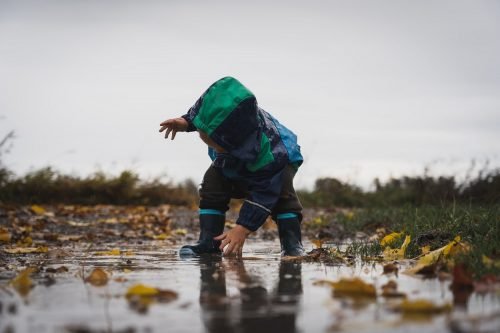 Stump circles are a great landscape design feature to a backyard. Gives the yard a fun focal point. Children can practice balance with their bodies, while also counting steps by jumping to the next stump. - Woodhaven SchoolMother Nature has already provided all the natural elements young children need for play and healthy development, so why not organize your outdoor space in such a way that provokes children's curiosity and leads them to more sustained nature play. This could look as simple as incorporating child-sized log tables and chairs for art-making surfaces, gathering loose parts (hunks of logs for rolling or stacking, leaves, seedpods, feathers, shells, etc.) to supportive creative play and critical thinking, or creating a space that is safe for climbing and exploring on natural elements. The best way to transform your space is to look at it with a child's eyes - and remember, we can never improve on nature! - Eastern Region Association of Forest & Nature Schools
Stump circles are a great landscape design feature to a backyard. Gives the yard a fun focal point. Children can practice balance with their bodies, while also counting steps by jumping to the next stump. - Woodhaven SchoolMother Nature has already provided all the natural elements young children need for play and healthy development, so why not organize your outdoor space in such a way that provokes children's curiosity and leads them to more sustained nature play. This could look as simple as incorporating child-sized log tables and chairs for art-making surfaces, gathering loose parts (hunks of logs for rolling or stacking, leaves, seedpods, feathers, shells, etc.) to supportive creative play and critical thinking, or creating a space that is safe for climbing and exploring on natural elements. The best way to transform your space is to look at it with a child's eyes - and remember, we can never improve on nature! - Eastern Region Association of Forest & Nature Schools
Build a nature nook
One of the best ways to engage kids in outdoor learning is to help them create their very own nature nook. It's a special place in the front or backyard that's completely their own. They get to decide what goes in the space (chair, table, outdoor pillow, decorations, etc) and how they use it (to read, complete homework, create art, or just sit and enjoy listening to the sounds of nature). Kids may enjoy a space that you create, but if you give them the autonomy and support to create their own, they're guaranteed to love it! - Nature Matters Academy
Don’t be afraid to get a bit wild -kids learn best when they choose their own adventure
Recreate a wild adventure in your own backyard with a nature haven corner that brings the forest school to you, no matter what size space you have. It can be as simple as keeping a small, quiet corner that’s not so well-kept and allowing the grass to grow longer - counterintuitive I know! But a few old broken pots on the ground next to some stick bundles and you have an instant bug haven. Make your own butterfly drive-thru by choosing to incorporate plants that attract local bees, and other pollinating insects that in turn will bring in birds and other intriguing animals to visit. Future scientists and eco heroes will enjoy running their own research project with a chart that notes how many of each animal they find. For the more adventurous, add a pile of branches ready for den building and a couple of log rounds for jumping, sitting or just about anything else they think of and your kids might never come back indoors again! - Wildkids AustraliaNot only aesthetically pleasing but a dry creek bed made of various-sized river rocks can also create an imaginative play environment for young children with endless possibilities. Encourage children to explore with their toys- construction trucks, animals, shovels and buckets, for example, add items to build with the rocks such as sticks or blocks, or paint a few of the rocks together as a family to assist in providing ample learning and play opportunities. To make it even more special, incorporate a small wooden bridge across the creek bed that can lead to a magical world! - Greenwood Nature Preschool
Get cookin’ with a mud kitchen
My top tip for backyard transformation can be summed up in one word: mud. Creating an area where kids can engage in water and mud play will not only provide a space for fun and entertainment, but also rich learning through imaginative play, as well as meaningful engagement in nature. Creating a "mud kitchen" is as easy as offering a space for them to dig and dip. Clear a dirt area, add an old sink (kid height), buckets and baking tools, shovels and spoons - Seattle winters will provide all the water - and kids will learn about everything from baking to watersheds. - Roots & Sky Nature-Based Learning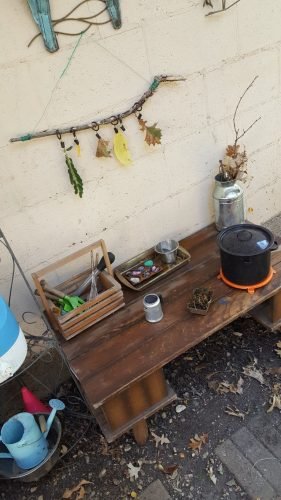 A mud kitchen, using old pots, pans and utensils. Let your kids use dirt, water, weeds, seeds, berries, anything they need to concoct and bake! - Upstream Forest SchoolA backyard mud kitchen can provide hours of play, learning, and creativity. It only takes a few simple ingredients, a workspace, old pots and pans, measuring cups, a water dispenser, and mud or sand. Children will get an unforgettable sensory experience, practice life skills like measuring, mixing, and cooking all while being deep in imaginative play and connecting with the natural world. As the seasons change, add in natural items, rainbow flowers in Spring, lots of greens in Summer, colorful leaves and nuts in Fall, and pine branches in Winter. - Nature Schooling
A mud kitchen, using old pots, pans and utensils. Let your kids use dirt, water, weeds, seeds, berries, anything they need to concoct and bake! - Upstream Forest SchoolA backyard mud kitchen can provide hours of play, learning, and creativity. It only takes a few simple ingredients, a workspace, old pots and pans, measuring cups, a water dispenser, and mud or sand. Children will get an unforgettable sensory experience, practice life skills like measuring, mixing, and cooking all while being deep in imaginative play and connecting with the natural world. As the seasons change, add in natural items, rainbow flowers in Spring, lots of greens in Summer, colorful leaves and nuts in Fall, and pine branches in Winter. - Nature Schooling
Engage problem-solving and motor skills with an obstacle course
Here at The Muddy Puddle Teacher, we love encouraging families to make homemade trim trails. Start by asking your local tree surgeon if they have any free stumps of wood. Then head to your back garden and dig holes for the stumps to lie. Dig deep enough so the logs do not move when stood on and are secure. Spread the logs out so that the children can balance and jump from one stump to the other. - The Muddy Puddle TeacherCreating a sensory path is a great addition to any backyard, allowing children to burn energy and build gross motor skills as they walk, skip, or jump across various materials. A large, covered sandbox can be used as intended when opened, as the cover provides seating and play, and while covered, it creates a stage for impromptu performances. Building a sound wall along a fence with a variety of pots, pans, cookie sheets, etc. mounted on a grid, along with wooden spoons and other kitchen utensils as tools, provides instant access to music. Adding a large metal sheet to a fence creates a magnet board where children can create designs and patterns with homemade magnets, using inch-sized ceramic tiles or colored glass “jewels” glued to magnets. - Good Shepherd Episcopal School
Teach them to upcycle
Upcycle, upcycle! Let's help reduce our waste and give some classic household items a second life! Our favorite way to do this is by gathering a "mud kitchen." This can be as simple as you want, it looks like a big tub filled with cupcake pans, whisks, pots, wooden spoons, old baking dishes, measuring cups, spatulas, etc! This is the perfect way to get your children out in the yard, concocting potions (creativity), play cooking (practicing math and measuring), playing house/family (communications and conflict resolutions), and getting their hands dirty! - Wildlings Forest School
More loose parts!
You're a young family with children...you've just bought a house with a nice, open backyard. Before you head to your local home improvement store to order a pre-fab swing set, may we share with you a decade's worth of nature school experience about what children really want...LOOSE PARTS! And lots of them! What are loose parts, you ask? Loose parts are natural and synthetic materials that can be moved, carried, redesigned, lined up, stacked up, built upon, combined, and taken apart - tires, pipes, sticks, bricks, tree cookies, sand mounds, boards, tarpaulins, hay bales, pots and pans. Opposite of that store-bought swing set, which can only be interacted with in one 'right' way, loose parts can be used in a multitude of ways. They serve to stimulate a child's natural urge to build and create, to move things around, to use materials differently than an adult may predetermine. And in terms of learning benefits, loose parts play encourages a child to see possibilities, to take initiative, to problem solve, to develop independence and interaction with the landscape around them. Be prepared for your children to play uninterrupted for hours in their magical self-created world! - Painted Oak Nature School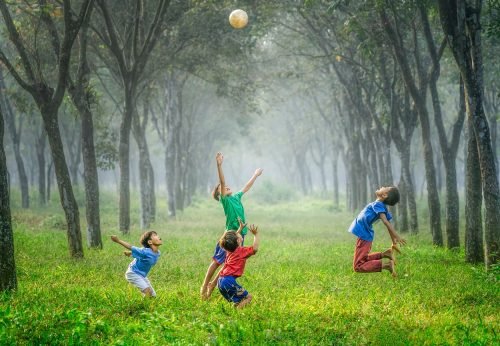
Keep it simple
Transforming outdoor space into a learning environment for kids doesn't have to take much! Head to a thrift store or ask the neighbors for some old muffin tins and stainless steel spoons or ladles. Add a bucket or a bowl, and you've got all the makings of a portable mud kitchen. When it comes time for gift buying, consider something that adds to that play: like our stone composite play food, or a rain barrel or water jug that allows kids access to water without running the hose. Keep it simple - no instructions are needed! - Biddle and Bop
Build a play structure using sustainably sourced materials
Build a play structure using recycled materials (found and/or purchased). This project incorporates sustainability thinking, strengthens planning and math abilities, supports executive function and collaboration, and develops gross and fine motor skills. It's sure to pay off when it's rainy, snowy, or very hot outdoors and kids can enjoy finding shelter in a place of their own design! - Sacramento Waldorf SchoolOriginally published on Redfin

